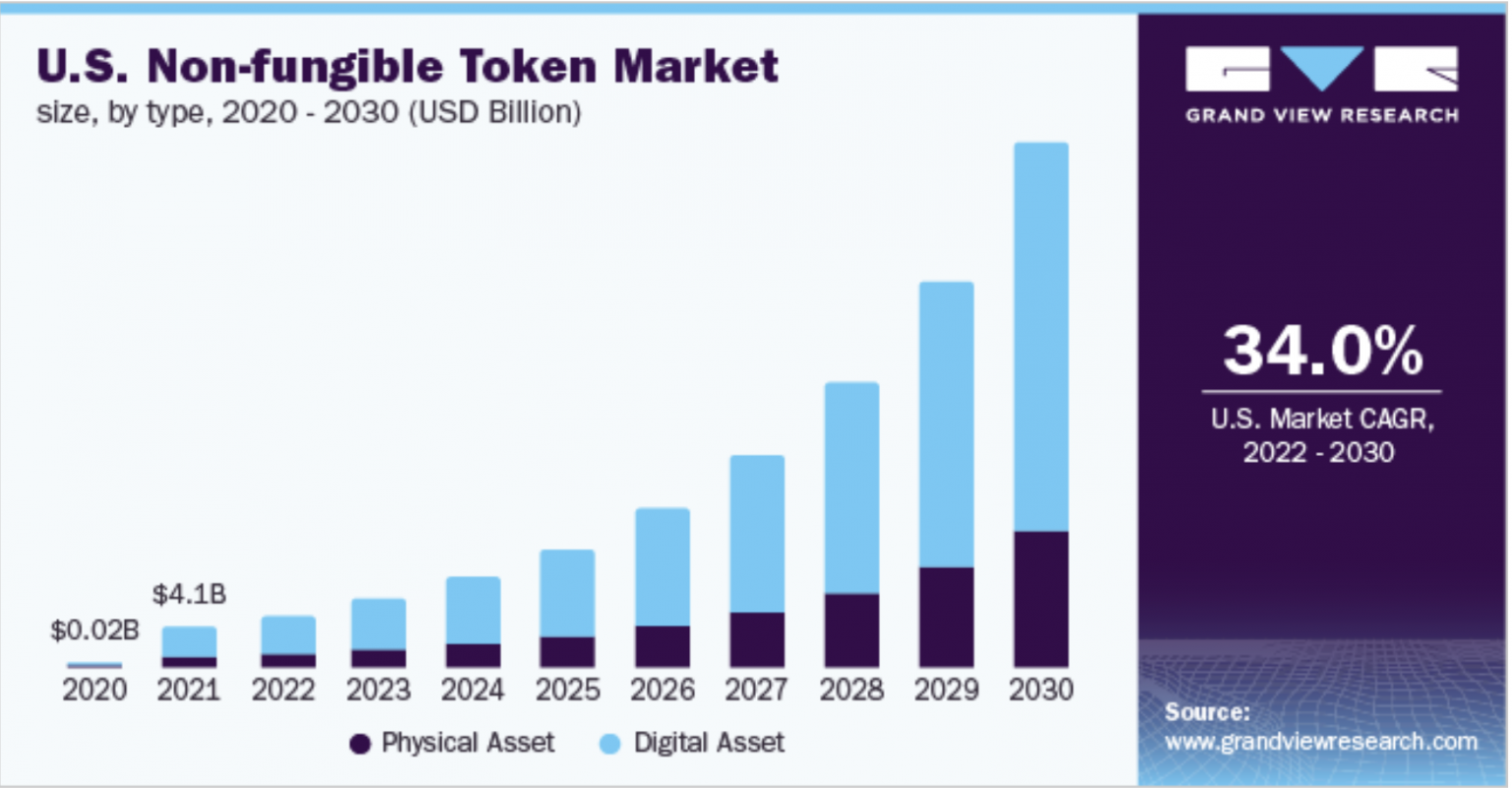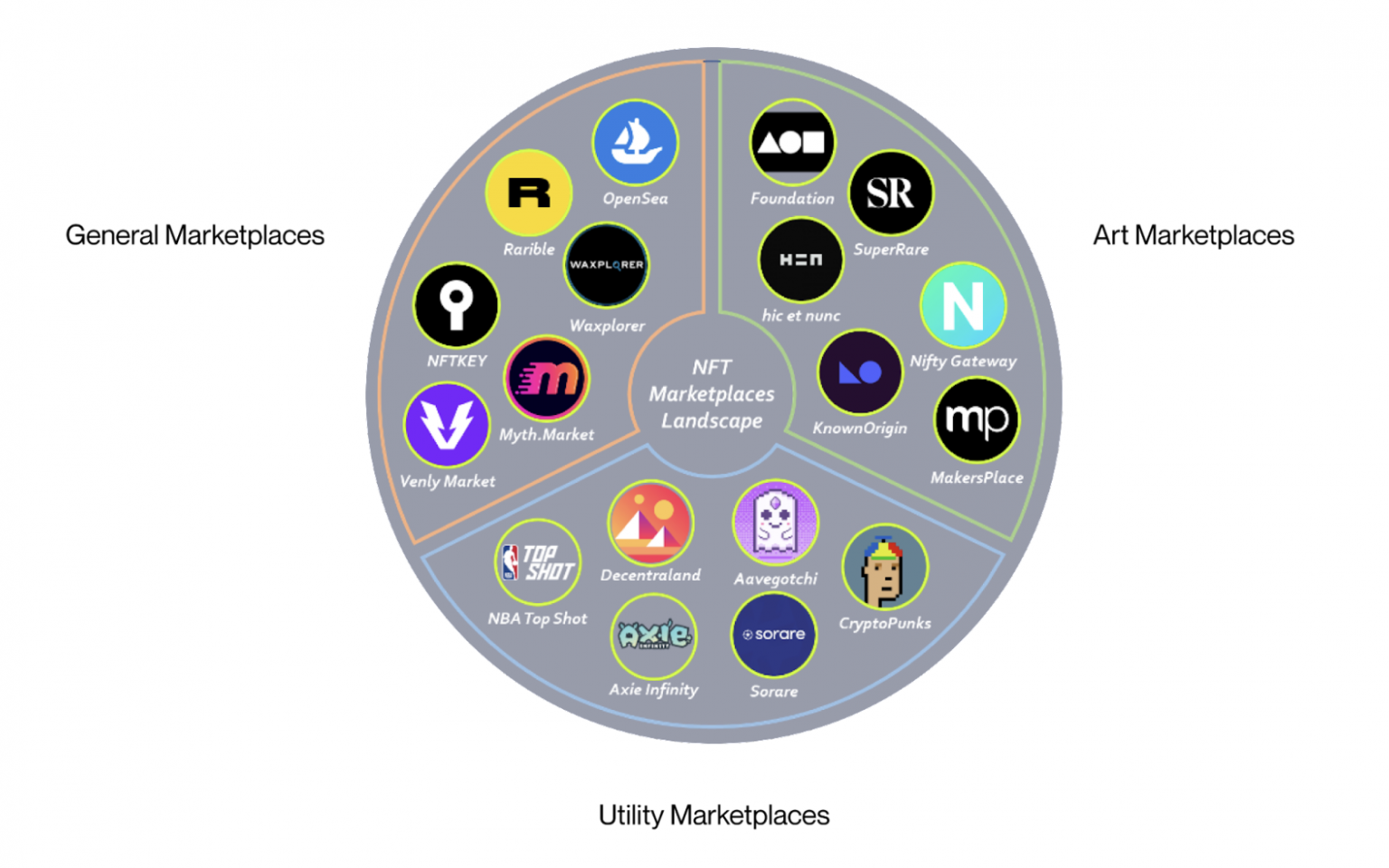How to Create Your First NFT Project
Have you ever wanted to create a non-fungible token (NFT)? If yes, then this guide is for you. If not, maybe it’ll make you want to create one!
What Is NFT?
NFT stands for non-fungible token. NFTs are unique digital assets that don’t share the same value as fungible tokens do. Cryptocurrencies and artworks are popular types of NFTs, but NFTs can also be music pieces, game designs, physical items and other things.
So how does an NFT piece work? Let’s consider the example of a piece of digital art as NFT.

Image source: ArtyNFT
Everything starts with the artwork. Whether it’s a physical piece, a digital one or a digital reproduction of a physical image, it is uploaded (minted) to the blockchain. A smart contract is then created, and an NFT is generated.
That’s it! Now the token is stored in the blockchain and can be sold.
Why Create NFT Projects?
With the first NFT created in 2014, the market has exponentially grown since, reaching a total value of $4.1B in 2021 in the US alone. And it is expected to continue growing significantly by the end of the decade.

Image source: Grand View Research
Obviously, a growing market offers great opportunities for investments. Besides, the average cost of creating an NFT ranges from $70 to $150 while it can be sold for as much as millions of dollars. So the potential return on investment is just spectacular.
How to Create an NFT Project
NFT projects take some time to be created from start to finish since there are different steps you have to go through to get your first token up. Here’s a detailed guide for you on how to create your first NFT project.
Step 1: Research your audience
First, you need to figure out who will be interested in your NFT. If you’re creating a new cryptocurrency, for example, then your primary target audience is probably other people interested in cryptocurrency.
But if you’re creating an NFT that’s relevant to art or design and has no connection to cryptocurrencies or blockchain technology at all, i.e., an NFT that represents artwork or an artist, then your primary target audience would be totally different.
Regardless of who your audience may be, you will still have to define them all the same way. In particular, look at how they interact with each other and with the world around them on a daily basis. This is more important than what types of products they buy off store shelves.
The next step is to figure out what your target audience values. Try finding answers to the following questions:
- Do they care about art and design?
- Do they care about making a profit on their investments and want to make money off of selling their NFTs at some point down the line?
- What are the things that motivate them as people, and how can you use those motivations as an advantage?
After analyzing the above, you will get an image of your audience and will be able to create the type of NFT your audience will be interested in and market it accordingly.
Step 2: Create the content
Now you can start creating your first non-fungible token. First, think about what you would like to create. Is it a piece of art? A virtual item for a video game? A physical object like a car or book? NFTs can represent all of these things and more!
Whatever your idea is, take some time to really flesh it out — the more detailed and thought-out your project is, the better it will be received by other creators and users of the marketplace.
One great way to make your NFT project more costly on the market is to create collectibles that are only valuable if they’re rare, such as if there are only a few hundred copies out there, for example. Then those few hundred copies will be worth more than the average copy of something else with a higher print run.
Next, think of who is going to be the creator. If you plan on selling your own works, then it’s time to start working on your music, art, game design or any other type of NFT you have in mind. Remember that your NFTs have to be unique, so use original ideas only.
If you don’t have the skills, you can hire a content creator who will help you make your NFTs. There are many content creators out there — they can do anything from writing music or lyrics for songs to creating artwork for comic books and designing characters or even games. So you’ll definitely find someone to work with!
The important thing to remember is that you need to find someone who shares the same vision as you and can help make your project a reality.
Also, the content creator will be responsible for making sure any sounds or images created during development are properly licensed for use in your project. This can get complicated, so it’s best to talk to a lawyer before signing any contracts.
In most cases, you will pay your content creator in fiat currency. But if they’re an artist, it’s not uncommon to pay them in NFT tokens instead. So you’ll also need to sign up for a cryptocurrency exchange like Binance or Coinbase to be ready to handle your payments for content creation.
Step 3: Choose a platform and enter the marketplace
Now that your digital assets are on display, it’s time to start trading them! NFT collectors will visit your page and see all of the items you have for sale. Some may want the dog tokens because they’re cute and funny; others may be looking for a dragon token because they want to own every type of NFT in existence.
So to start selling your NFTs, you first need to choose a platform and enter the marketplace. Begin with considering which digital asset exchange (DAX) will be the easiest for you to use and which has a good reputation among NFT collectors.
For example, NFT marketplaces like OpenSea, MakersPlace and CryptoPunks are great places to sell your NFTs. These are easy to set up and use as well as are popular in the community.

Image source: NFT Tech
After you’ve decided which platform to go with, set up your profile. This is when you mint your NFTs and add metadata about your NFT and its creators (like who, what, where and when). Be sure to choose the right category for your tokens — you don’t want people searching for “dog” tokens when they could be looking for “dragon” ones.
You can also add any additional info that would be relevant for people who want to know more about the token. This includes links to images with high-quality versions of the items so that people can have a closer look before purchasing.
Step 4: Start promoting your project
Now that you’ve made your NFT and have it live on the blockchain, it’s time to handle the promotion. There are lots of ways to promote your project, but here are some tips for getting started.
- Promote your project on social media. Use hashtags like #crypto or #cryptocurrency to reach a wider audience. You can also collaborate with other creators who have similar projects as yours to get help spreading the word about what you’re doing. This would give you both the mutual benefit of exchanging your audiences and growing that of each of you.
- Create a marketing plan. A marketing strategy with specific goals will help you achieve them sooner. Make sure the goals and efforts you’re going to make to reach them are realistic, given the budget available. Don’t expect an enormous response if people don’t know about what you’re doing yet!
- Reach out to influencers. People who have large followings on Instagram, Twitter, TikTok or YouTube and might be interested in promoting NFTs could be great partners to you. Especially, if they share similar interests and are compatible with your vision and goals.
And remember that it’s okay to reach out to those who are more experienced and successful. Of course, asking for help may be tough, but it’s an important part of growing an audience and making sure people are aware of the NFT project you’re doing.
Wrapping Up
Starting a new project in any field may seem like a challenge, but it is so fun at the same time! Now that you know how to create your NFT project, it should be easier to get started for you.
In fact, this is a great time to get involved in the NFT space. It’s constantly evolving and growing, meaning that there are plenty of opportunities for creators and entrepreneurs.
If you have any questions about how to create your own NFT project, feel free to reach out and we’ll do our best to help you get started with NFTs.



